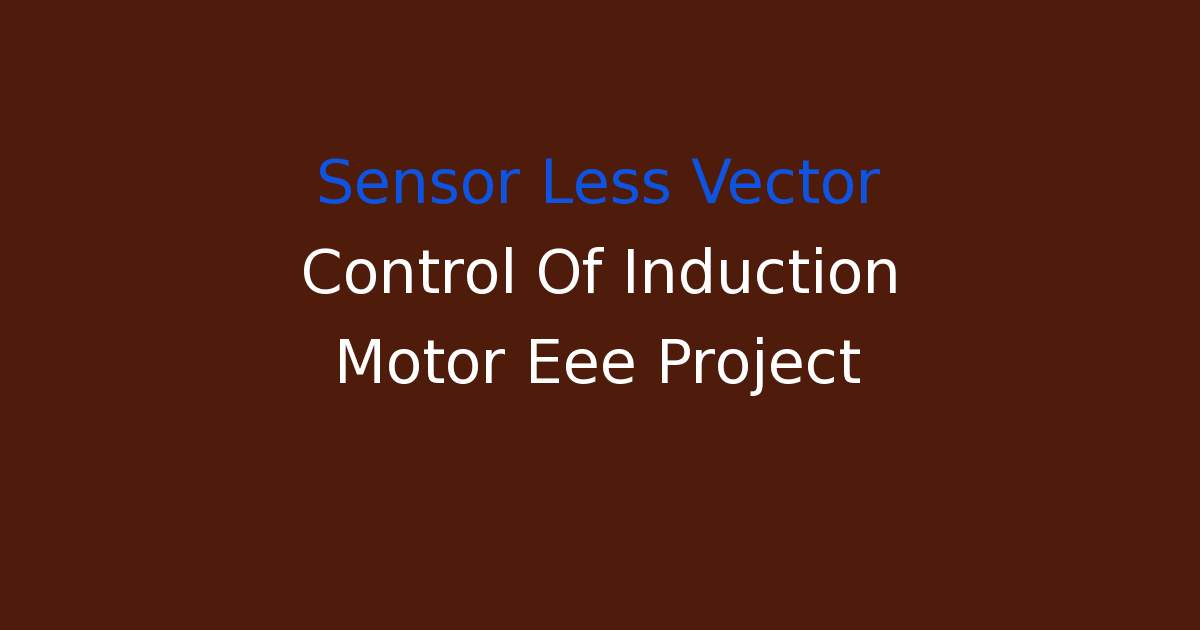EEE project on sensorless vector control of induction motor.
Introduction
In the field of electrical engineering, the control of induction motors is crucial for various industrial applications. One of the popular methods for controlling induction motors is sensorless vector control, which eliminates the need for position sensors while maintaining good performance. This project focuses on the development of a sensorless vector control system for an induction motor, aiming to improve efficiency and reliability.
Problem Statement
Traditional control systems for induction motors rely on position sensors to detect rotor position, which can be expensive and prone to failure. Sensorless control methods have been developed to overcome these limitations, but they often suffer from accuracy and reliability issues. The goal of this project is to develop a sensorless vector control system that can accurately control an induction motor without the need for position sensors.
Existing System
The existing system for controlling induction motors typically involves the use of position sensors to detect rotor position. These sensors provide feedback to the control system, allowing it to accurately control the motor’s speed and torque. However, position sensors can be expensive to install and maintain, and they can be prone to failure, resulting in downtime and maintenance costs.
Disadvantages of Existing System
- Expensive installation and maintenance costs
- Potential for sensor failure leading to downtime
- Limited accuracy and reliability
Proposed System
The proposed system for sensorless vector control of an induction motor will utilize advanced algorithms and signal processing techniques to estimate the rotor position based on the motor’s operating characteristics. By analyzing the motor’s electrical signals, the control system will be able to accurately determine the rotor position and adjust the motor’s speed and torque accordingly.
Advantages of Proposed System
- Eliminates the need for expensive position sensors
- Improved accuracy and reliability
- Potential for cost savings
Features of the Sensorless Vector Control System
The sensorless vector control system will have the following key features:
- Advanced signal processing algorithms for accurate rotor position estimation
- Dynamic control of motor speed and torque
- Real-time monitoring and feedback for improved performance
Conclusion
Overall, the development of a sensorless vector control system for induction motors has the potential to revolutionize the way motors are controlled in industrial applications. By eliminating the need for expensive position sensors and improving accuracy and reliability, this system offers a cost-effective and efficient solution for motor control. Future work will focus on testing and refining the system to optimize its performance and ensure its practical applicability in real-world settings.

